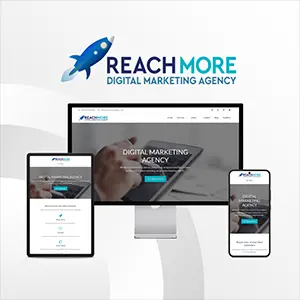Click here to get this post in PDF

When it comes to early-stage companies, brand-building is not simply about designing a logo or introducing a new website; it is far more about developing a strong, trustworthy identity that connects with the right audience and aids in long-term prosperity. During early development, there are several decisions you will make around positioning, messaging, and launching to market. It is so easy to lose the most exciting products and services to the commodity of noise, which is where brand strategy services come in, not for short-term buzz but for long-lasting effect.
Whether a company is launching to market, expanding a product suite, or refining its value proposition, activating the appropriate growth levers early can unlock recognition, trust, and scalability. Here are five key brand-building actions for early-stage companies—those that want to thrive, instead of simply survive.
The 5 Brand Growth Levers You Should Prioritize
These strategic moves lay the groundwork for sustainable growth by building visibility, differentiation, and emotional connection—all vital to scaling an early-stage brand.

1. Build a Strong Segmentation Strategy
A strong segmentation strategy is central to any organization seeking to build a brand. Segmentation provides companies with information about who their customers are, what they value, and how they behave. Rather than simply targeting “everyone,” successful brands target the most valuable customer segments, or the segments most likely to convert, retain, and refer to others.
Segmentation isn’t simply demographic; it is also psychographic (values, interests, lifestyles), behavioral (buying patterns, engagement preferences), and need-based (specific problems your product solves). Companies can develop succinct customer segments, allowing them to create unique messaging, unique experiences, and unique offers that resonate directly with the specific needs of their target audience. Meaning more effective marketing and spending dollars more effectively every time.
2. Define and Own a Unique Value Proposition
Startups often don’t know how to navigate the process of standing apart. When a startup can’t sufficiently convey its unique value proposition, it runs the risk of blending into the landscape much like all of its other competitors or being completely forgotten. A unique value proposition (UVP) is a clear statement of the promise of a company and its importance to an ideal customer.
A strong UVP means answering a few key questions… What problems are we solving? What makes us different? Why should they trust us? Once a startup defines its UVP, it should be infused into everything in the brand: from the website copy, packaging, investor slides, and induction for the team. It is the clarity and consistency of the UVP that builds recognition and loyalty with customers over time.
3. Invest in Visual Identity and Messaging Early
When your brand develops a visual identity—logo, color scheme, typography, and design system—it conveys just as much as your messaging does. During the early stages, a cohesive, professional identity represents credibility and intent. However, visual appeal can only contribute so much; clear, compelling messaging that emotionally resonates with customers is equally important.
Brand voice, tone, taglines, and storytelling should reflect your customers’ values. Are you more playful and lighthearted or more expert and reassuring? A clear and consistent messaging framework helps customers recognize and understand your brand. Done well, this makes it easier for your audience to build trust and engage with your business.
4. Leverage Founder-Led Storytelling
At the early stages of growth, perhaps the best asset a brand has is its founder. In reality, people connect with other people before products. Authentic founder storytelling humanizes the brand, builds an emotional connection, and creates trust. Whether it is on social media, in interviews, or on the company website, founder narratives about why the business exists and what the mission behind the business is often resonate with audiences at a deeper level.
Transparency about struggles, milestones, and values makes the brand feel more relatable and human. Keeping things human-focused and authentic is a powerful storytelling layer, growing into a differentiating and unique brand attribute that is difficult for competitors to replicate as the businesses scale.
5. Create Feedback Loops and Measure Brand Perception
Early-stage companies should act quickly to learn from the market. Feedback loops—from customer interviews and surveys to usability testing and social listening—help teams understand how a brand is being perceived and how it should evolve.
This understanding helps brands clarify their messaging, reposition when necessary, and pivot product offerings without losing their sense of identity. There is also value in knowing how brands are tracking over time, which can be monitored by brand engagement analytics or brand perception studies. Growth in brand awareness, sentiment, and engagement gives a clear sense of progress, with trackable metrics that support decision-making. The earlier this data-driven approach to evaluation is built into the process, and the longer it continues over time, the more the brand can become resilient.
End Point
The beginnings of brand development are full of possibilities—and risks. With insightful activation of the right growth lev ers and adherence to discipline, consistency, authenticity, and strategic clarity, early-stage companies can build brands that both stand out from the crowd and stand the test of time.
Also read:
Building Client Relationships That Help Support Long-Term Business Growth
